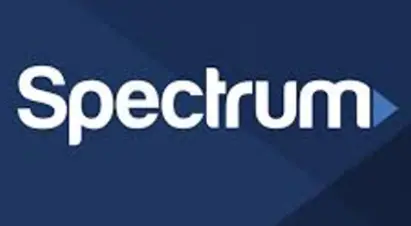Complaint Review: Silverado Senior Living - Los Angeles California
- Silverado Senior Living 330 N. Hayworth Avenue Los Angeles, California United States of America
- Phone: 323-852-9200
- Web: www.silveradosenior.com
- Category:
Silverado Senior Living Beverly Place Rat Infestated Senor Abuse Overpriced Hospice Los Angeles, California
listed on other sites?
Those sites steal
Ripoff Report's
content.
We can get those
removed for you!
Find out more here.
Ripoff Report
willing to make a
commitment to
customer satisfaction
Click here now..
I work at this location and let me tell you a little something. Silverado Senior Living Hospice specializes in assisted living for people suffering from dementia and Alzheimers because that way they way they abuse elderly people can go un reported and un-believed. Do yourself and your loved ones a favor and do NOT allow them to have to live here in a place managed bu such people.
Perhaps there is no more visual reminder of abuse or mistreatment than a bruise. The discoloration is not only ugly in appearance, but it can also be a source of pain for the individual. Because bruising can be a relatively common occurrence in the elderly, I think its important to learn more about this medical condition and hopefully become better at identifying a bruise due to mistreatment vs. the normal aging process. What is a bruise? Bruises can result after an injury, a fall, or even bumping into something. A bruise (contusion) is an injury to the soft tissue that results in broken capillaries which leak red blood cells. As the heart pumps, the blood escapes to the surrounding tissues, creating a bruise.
Bruises can surface hours or even days after an injury and can also show up on a different part of the body than was injured. Bruises are usually reddish in color at first, turning bluish-black or purple after a couple hours, then yellow, green, or brown as they heal. Because bruises involve skin trauma, they are usually painful for at least the first few couple days. How bruises heal. Bruises fade gradually as your body reabsorbs the blood that leaked from your blood vessels. After an injury, you can take steps to prevent or minimize bruising. This includes applying a cold compress to the injured area, elevating the injured area, and avoiding blood thinning medications if possible.
During the healing process, a bruise will fade in color, from bluish-black or purple to a yellowish green to a lighter brown before disappearing. This color change occurs as the bodys white blood cells remove the decayed blood products little by little. In most cases, bruises heal in one to two weeks, but deeper, more severe bruises can last longer. Bruising in the Elderly. Older adults bruise more easily and heal more slowly than younger adults because they have fragile capillaries and thinner skin. This is because as you age, your skin becomes thinner and you lose some of the protective fatty layer that helps cushion your blood vessels. In addition, bruises in older adults can last longer than the usual 1-2 weeks, sometimes lasting for months. Certain drugs can also make you more susceptible to bruises, many of which are common medications for older adults. Many older adults take non-steroidal anti-inflammatory medication for arthritis including ibuprofen (Advil, Nuprin) and naproxen (Aleve), which can interfere with blood clotting.
Blood-thinning medication such as aspirin, Coumadin (warfarin), and Plavix (clopidogrel) reduce your bodys ability to clot, which can cause increased bruising. In addition, corticosteroids can make your skin thinner, making you more susceptible to bruises. Signs of abuse? Bruises are one of the most common indicators of nursing home abuse and neglect. This is important to note because elder abuse, including physical abuse, is on the rise. Elderly nursing home residents are vulnerable to injuries and abuse because of weakness, illness, and decreased mental cognition. Many times the elderly residents who are victims of abuse are unable to alert family or staff of the abuse. They might be too scared to report the abuse or too embarrassed, or even unable to remember the abuse that they were forced to endure because of a cognitive impairment. Residents with moderate or severe dementia may be unable to give an accurate description of abuse or neglect.
Oftentimes, the context in which an injury occurs is just as important as the injury itself in screening for elder abuse and mistreatment. Because of the serious risks associated with elder abuse, nursing home staff must be properly trained to recognize signs of abuse and closely monitor residents for common signs of injury or abuse, such as bruising. In Illinois, if a nursing home suspects that a residents injury might have been caused by abuse, the facility must report the matter to the Illinois Department of Public Health, investigate the alleged abuse, and provide a copy of the investigation to the Department. (Illinois Administrative Code: Long-term care facilities 77 Administrative Code 300.3240 Abuse and Neglect). Nursing home facilities must take all injuries seriously, especially bruises that might indicate abuse (because of bruise location, size, or re-occurrence).
Oftentimes, it is difficult to determine if bruising is normal, accidental bruising or something worse. In order for facilities to better be able to recognize abuse, the literature must be improved by documenting normal bruising in the geriatric population. This could then provide a point of comparison for nursing home facilities and caregivers when they encounter suspicious bruises. Until then, nursing homes must err on the side of caution, investigating all injuries that seem even slightly suspicious in order to protect our elderly population. Although older adults bruise more easily, staff should still be concerned when residents have bruises, especially if they are in patterns or clusters, or the bruises reappear. The pattern or shape of the bruise can sometimes provide clues as to the cause of an injury (bruises can occur in the shape of knuckles or fingers). Bruises in patterns can indicate the use of restraints (bruises on hips and arms can indicate the use of bed rails, and bruises on the wrists can indicate the use of cuffs).
Frequent or serious falls are another common cause of bruising, and can indicate improper supervision of a resident. In order to provide the best possible care, nursing homes must have care plans in place to prevent residents from suffering from accidents and abuse. The location of the bruising may also indicate abuse. The most common locations for non-accidental injury are the face, neck, chest wall, abdomen, and the buttocks. A study in the Journal of American Geriatrics Society, Bruising as a Marker of Physical Elder Abuse, reported that bruises occurring as a result of physical elder mistreatment are often large (> 5 cm) and occur on the face, lateral right arm, and back of the torso. In another study published in the same Journal, The Life Cycle of Bruises in Older Adults, the study revealed that almost 90% of accidentally acquired bruises in adults aged 65 or older occur on the extremities.
In a sample of one hundred adults aged 65 and older, there were no accidental bruises on the neck, ears, genitalia, buttocks, or soles of the feet. And, if the bruise was on the trunk (torso) of the body, the subjects were more likely to know the cause of the bruise. Therefore, nursing home staff should pay particular attention to bruises that occur on a residents face, arm, and back because these areas have been shown to have the greatest incidence of bruising in cases of mistreatment. If you notice bruising on a family member who lives in a nursing home, you should ask the staff members about the cause of the bruising. Elderly adults are vulnerable to abuse and neglect and every effort should be made to prevent or stop mistreatment.
This report was posted on Ripoff Report on 01/23/2010 01:26 PM and is a permanent record located here: https://www.ripoffreport.com/reports/silverado-senior-living/los-angeles-california-90048/silverado-senior-living-beverly-place-rat-infestated-senor-abuse-overpriced-hospice-los-a-558944. The posting time indicated is Arizona local time. Arizona does not observe daylight savings so the post time may be Mountain or Pacific depending on the time of year. Ripoff Report has an exclusive license to this report. It may not be copied without the written permission of Ripoff Report. READ: Foreign websites steal our content
If you would like to see more Rip-off Reports on this company/individual, search here:

Advertisers above have met our
strict standards for business conduct.







































